
Helen Flanagan says she spent her 20s ‘pregnant and breastfeeding’
Helen Flanagan admits she’s “no superwoman”, and isn’t saying being a single parent is easy. But despite “running around like a blue-arsed fly” as she puts it, the former Coronation Street actress, who split from her footballer fiancé Scott Sinclair last summer, says her new single family life is working really well. “I co-parent with my ex-fiancé Scott – we’ve got three children together, and we were together for 13 years,” explains Flanagan, 32, who has just appeared on I’m A Celebrity… South Africa. “My friends help me with the children, because I do work nearly every day. I have a friend and we’re a girl gang together – I’m not superwoman! So that works nicely at home. “Scott’s living with his mum at the moment in Bristol, and my children are really close to their nana, so it works really well. My kids just have a really happy environment, with me and my friend at home, and then they have a really nice happy environment with their dad and their nana.” Flanagan, who lives in Manchester, says she has the children – Matilda, eight, Delilah, five, and two-year-old Charlie – “the majority of the time”, as their dad’s away playing football for Bristol Rovers a lot. “So it kind of can’t be helped, really,” she says. “But his mum is absolutely fantastic, we get on very, very well. She’s known me since I was 19, so I’m close with his mum, and she helps me a lot with the children.” The actress admits that although she misses her “babies” when they’re with their dad and nana, she makes the most of her child-free time. “I had my children not young, but young-ish – I had Matilda when I was 24 – and I just feel like I spent all my 20s being pregnant and breastfeeding at home,” Flanagan reflects. “So it’s kind of nice sometimes to have that time, because I know they’re in the best hands with Scott’s mum, and it’s lovely that I can spend some time with my friends and concentrate on my work and have some fun. So it’s nice, it works well. “Of course I miss them, they’re my babies, but I know they’re really, really happy with their nana and their dad, so I don’t have to worry. I do feel like the happier you are as a mum, the better it is for your child.” Most of Flanagan’s time these days is spent either working or looking after the kids – and deflecting her daughters’ pleas to get on social media. “I’m not ready for my five-year-old and eight-year-old to have social media yet – I don’t think it’s healthy for children to have social media too young,” she says. “Matilda’s desperate to go on TikTok and create her own content, and sometimes I feel a bit guilty because I’m on TikTok and Instagram and she sees that. So I said, ‘Why don’t you have mummy’s?’ and she said, ‘No, I want my own!’” As a compromise for the time being, the girls have been allowed a NickWatch connected smartwatch, which is free from social media but features games, music, safe connectivity with parents, and a GPS tracker. “A GPS tracker is such a comfort as a parent to have,” says Flanagan. “You can see where they are at all times, which is great. For me as a parent, I never keep my eyes off my children, they’re too precious. It’s just to have peace of mind.” New research by NickWatch found 41% of parents with a child under 10 years say their child has walked off on their own without them being aware. According to the survey, parents of children aged under 10 say they’ve ‘lost’ them five times on average. Fortunately, keeping a close eye on her kids means Flanagan has never been in that position, although she admits: “I’ve had a moment in a supermarket where I’ve kind of gone, ‘Where’s Matilda?’, and then I’ve seen her. But it’s common for people to lose their children, which is really scary – it’s the worst feeling in the world, and you need to have eyes in the back of your head.” But it was her daughter’s eyes that were on her, when Flanagan took part in I’m a Celebrity… South Africa recently, more than 10 years after she first took part in the show in the Australian jungle. “I loved the jungle, I really, really, did,” she declares. “It was just such anamazing experience. It was great to go back and redeem myself. I didn’t want to be pathetic and rubbish at the trials, and I had my little girl watching from home, so I couldn’t have not done it – she’d have been gutted, so that was my motivation.” Now she’s back, Flanagan, who last appeared as Rosie Webster on Coronation Street in 2018, says she’s currently doing a lot of work on social media and auditioning, and has “things in the pipeline that I can’t really share just now”. But she adds: “I’d absolutely love to go back to Coronation Street at some point, it’s just timing – I definitely want to do it at some point.” Helen Flanagan is helping to launch Nickwatch, a new connected smartwatch for children aged six to nine with built-in GPS tracking. Read More Strictly Come Dancing star Amy Dowden diagnosed with breast cancer aged 32 Joe Alwyn attends Celine dinner at Cannes Film Festival Madeleine McCann – latest news: Search of remote reservoir enters second day as police seen digging beside dam Charity boss speaks out over ‘traumatic’ encounter with royal aide Ukraine war’s heaviest fight rages in east - follow live
2023-05-24 18:20
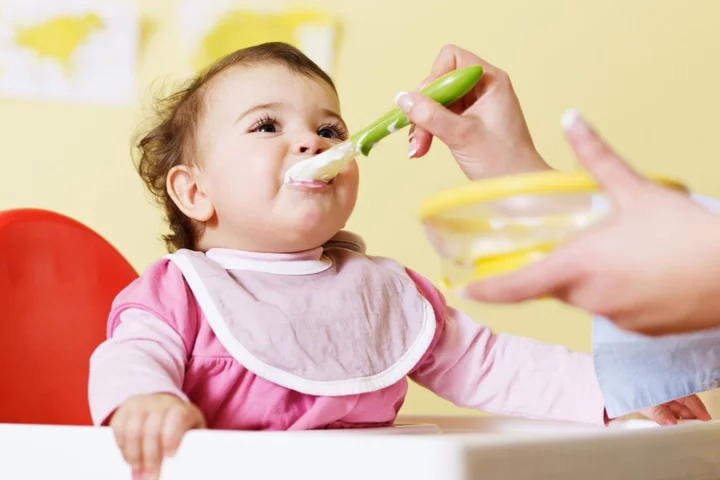
Baby food and drink guidelines needed over sugar concerns, say health campaigners
Health campaigners have called for the “overdue” release of new baby food and drink guidelines over concerns about the amount of sugar infants are consuming from popular shop-bought products. Action on Sugar, along with 16 other groups including The Royal College of Paediatrics and Child Health, Obesity Health Alliance, British Dental Association and the World Cancer Research Fund, have signed an open letter to Health Secretary Steve Barclay urging the release of the guidelines to ensure that all food and drink products marketed to babies are nutritionally appropriate. A letter has also been signed by baby food companies Babease, Little Dish and Little Freddie, calling for the release of the guidelines to create a level-playing field. Action on Sugar said many baby food brands were already reducing sugars but there were still products marketed as suitable for infants and young children with unsuitably high levels of sugars. Late last year, Action on Sugar analysed almost 100 baby and toddler breakfast products, finding that all of them included nutrition or health claims on their packaging and 86% used a “no added sugar” or “only naturally occurring sugars” claim, despite many adding sugar in the form of fruit or vegetable juices, concentrates, purees and powders. Earlier last year a British Dental Association (BDA) study of 109 baby pouches aimed at children aged under 12 months found more than a quarter contained more sugar by volume than Coca-Cola, with parents of infants as young as four months being marketed pouches that contained the equivalent of up to 150% of the sugar levels found in the soft drink. A survey of more than 1,000 UK parents with children aged six to 36 months old found 91% supported the Government in taking action to ensure all food and drinks available in the baby aisle were nutritionally appropriate according to NHS recommendations. An unhealthy diet high in saturated fat, salt and sugar and low in fruit and vegetables is the biggest cause of preventable ill health globally Dr Kawther Hashem, campaign lead at Action on Sugar It is recommended that infants under the age of two should avoid sugar-sweetened drinks and food with added sugar. After this, free sugars should provide no more than 5% of their daily energy intake (approximately 14g). Dr Kawther Hashem, campaign lead at Action on Sugar and research fellow at Queen Mary University of London, said: “An unhealthy diet high in saturated fat, salt and sugar and low in fruit and vegetables is the biggest cause of preventable ill health globally. “Given this, all food and drink companies should act responsibly and commit to improving their products as part of Government and NHS guidance and provide peace of mind for parents when buying foods for their young children.” A Department of Health and Social Care spokesman said: “We are developing guidelines for industry to improve the nutritional content of baby food and drink. “More broadly, thanks to our sugar reduction programme, we have delivered dramatic reductions in the amount of sugar in foods eaten by children – including a 14.9% decrease in the sugar content of breakfast cereals and a 13.5% reduction in yogurts and fromage frais.” Censuswide surveyed 1,004 UK parents of children aged six-36 months between November 2-3. Read More Charity boss speaks out over ‘traumatic’ encounter with royal aide Ukraine war’s heaviest fight rages in east - follow live Period advice now being offered by Amazon’s Alexa Male characters in role-playing video games ‘speak twice as much as females’ The staggering spend of wedding guests revealed
2023-05-24 15:16
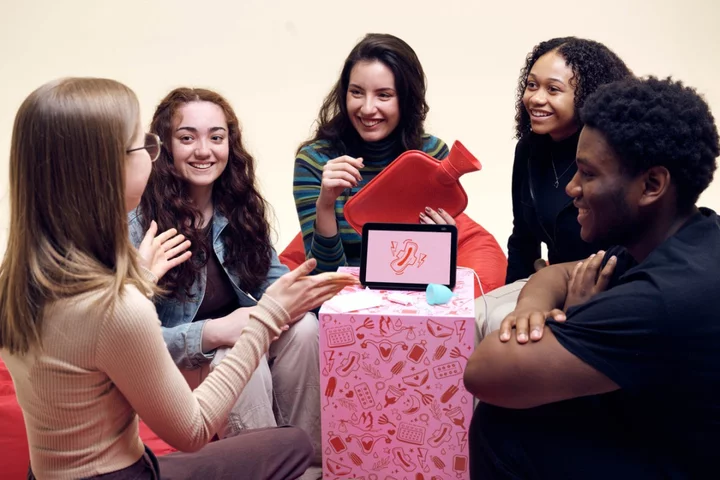
Period advice now being offered by Amazon’s Alexa
Amazon’s Alexa has been trained to offer better advice on periods. Alexa can now answer a series of detailed questions on periods by using information from the Freedom4Girls charity, whose guides have been informed by British teenagers, alongside existing content on the NHS website. Questions it can answer include “Alexa, what is period pain?”, “Alexa, can periods affect my mental health?”, “Alexa, how do you use period pads?” and “Alexa, what is a typical age to start your period?” Other questions for which Alexa has answers include “Alexa, what are reusable period products?”, “Alexa, where can I get free period products?” and “Alexa, are reusable period products cheaper?” Amazon worked with the period poverty charity Freedom4Girls to develop the new experience. Tina Leslie, founder of Freedom4Girls, said: “It’s so important that teenagers and parents alike can communicate with each other properly about periods, which is why we’re happy to be working with Amazon’s Alexa to ensure the correct resources are readily available to more families around the country. “The new features will be useful for anyone – whether you’re embarking on your first menstrual cycle, or if you’re helping someone you know prepare for their experience.” Dennis Stansbury, UK country manager for Alexa, said: “Alexa can now act as a tool to help families navigate challenging conversations around menstruation. “The hope is that having useful and relevant information available on Alexa via voice will encourage an open environment for these discussions.” Censuswide polled 1,007 UK parents with teenagers for new research to support the launch. Almost two-thirds (65%) of those surveyed said having easier access to quality information around periods would make them more comfortable having these types of conversations within their family. While 80% believed having open conversations reduces embarrassment and stigma, some 37% admitted they are too embarrassed at the moment to have open conversations about periods. A further 30% said they struggle to talk about them because they are worried about saying the wrong thing.
2023-05-24 14:25
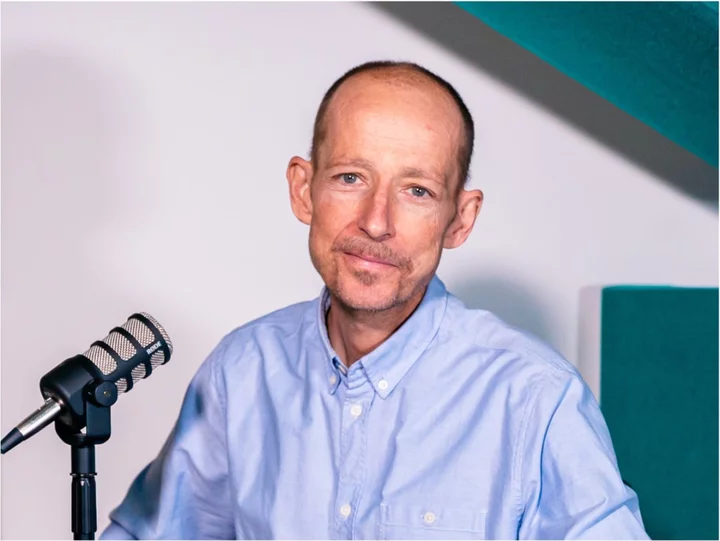
Jonnie Irwin says going public with terminal cancer diagnosis was day he began ‘living again’
Jonnie Irwin has revealed that he felt like he was living a lie before he was honest with the world about his terminal cancer diagnosis. The Escape to the Country presenter, 49, said in November that he “doesn’t know how long” he has left to live, after first being diagnosed with lung cancer in August 2020. Irwin, who also fronted the Channel 4 property programme A Place In The Sun, kept his cancer a secret among close friends and family for two years, before deciding to share the news in November 2022 when his cancer spread to his brain. In a new podcast launched on Wednesday (24 May) titled OneChat, by life insurance company AIG Life, Irwin has revealed that he hated hiding his condition from the world. "The day I came out and told the world I had terminal cancer is the day I started living again, I started being Jonnie Irwin again and I actually feel alive,” Irwin said. The presenter explained that he kept his terminal diagnosis a secret out of fear he would lose work. “The only reason I kept it a secret is because I’ve got to feed my babies, I’ve got pay the bills because when you’ve got cancer, people write you off,” he said in the podcast. Irwin and his wife Jessica have three children; three-year-old son Rex and two-year-old twins Rafa and Cormac. “I had to keep on providing for my family. I was living with such a dark cloud above me... anyone outside of my tight-knit [circle] didn’t know.” This “dark cloud” meant Irwin would hide from photographs and selfies with fans as his appearance started changing after chemotherapy. He said that telling the world was a “massive weight” off of his shoulders. “One of the things that really inspired me to go public was because I will leave a little footprint on this planet because of a TV career but I want to leave a positive footprint but I think I can educate people into living their lives better, then I’ve got something my boys can be proud of.” In March, Irwin gave a health update, telling The Sun: “I’m weak now, fragile and my memory is terrible… but I’m still here.” Read More Couple with 37-year age gap who met when he was 15 have hopes dashed Elle Fanning wows fans with daring cut-out dress at Cannes: ‘My nips could never’ ‘I spent too much money on your wedding’: Musician calls out married friend for flirting with other women
2023-05-24 14:18
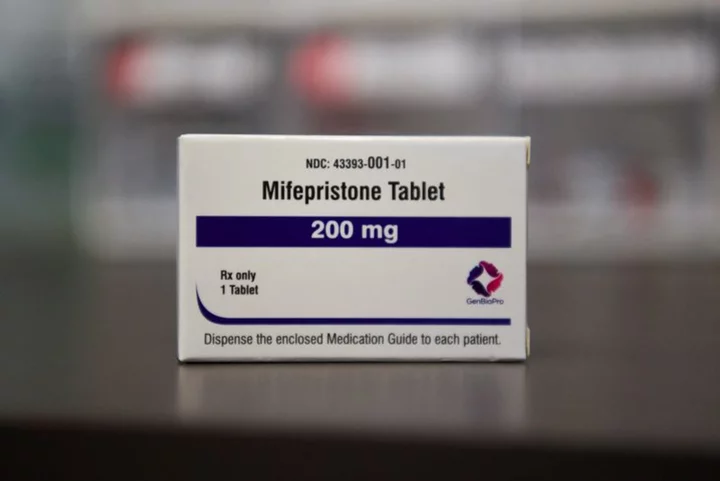
Abortion pill maker seeks to keep challenge to W. Va. abortion ban alive
By Daniel Wiessner Lawyers for abortion pill maker GenBioPro Inc on Tuesday urged a West Virginia federal judge
2023-05-24 06:54
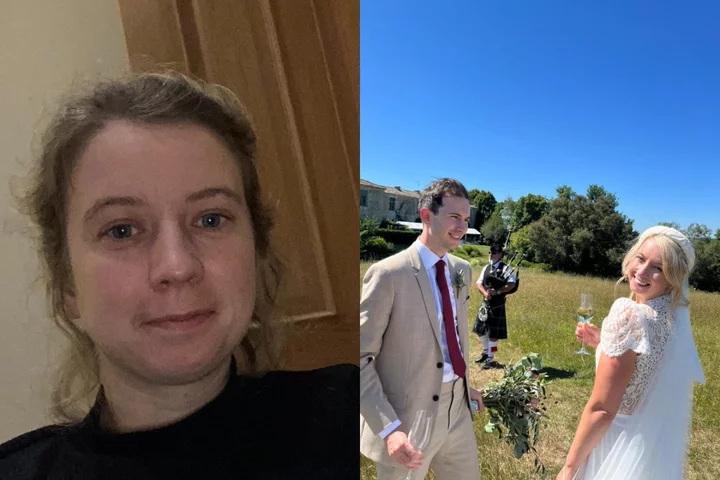
Woman reveals ‘crippling’ condition that almost called off her wedding
A woman who felt she was “trapped in this really dark world” due to her anxiety, causing her to have panic attacks, cancel her hen do, and feel she was “constantly on the verge of having a heart attack”, has said “therapy has allowed (her) to feel like (herself)” again and she has since gone on to marry her best friend who she met at school. Kirsty McKillop, 34, a strategist who lives in Walthamstow, London, said she had experienced anxiety “on and off” throughout her life, but it became all-consuming during the Covid pandemic – particularly after going through a redundancy process at her previous job in PR, which knocked her confidence and made her question her self-worth. She said she felt trapped in this “prison” that she had created in her mind and started “catastrophising” – she thought she would “lose everything in (her) life that she cared about”. “I felt like I was basically being crushed by the dark and being suffocated by it and I couldn’t get out,” she said. Kirsty decided to quit her job to look after her mental health, but then “everything went from bad to worse” as she started to experience debilitating physical symptoms. She would cry every day, vomit, experience heart palpitations, have panic attacks, feel agitated and extremely restless, and lie awake in bed until the morning. At her lowest point, Kirsty said she did not believe that she could get better, and she did not engage in “anything that might help her”. However, with the continued support of her now-husband, Liam, 34, family and friends, she began engaging in therapy from December 2021 – and gradually over time she could “physically feel (her anxiety) lifting”. She has since gone on to get married – something she previously did not think was possible – and go on her honeymoon to South Africa, and she now wishes to give the message that “life without anxiety is possible”. “No matter what level of anxiety you’re feeling, it isn’t something that you have to accept as part of life,” she said. “Whilst it is a natural human response, it’s not something you have to live with, and, going through therapy, it has just completely freed me from those feelings and I’m so much happier.” According to the charity Mind, anxiety is a natural human response when we feel that we are under threat; it can be experienced through our thoughts, feelings, and physical sensations. Kirsty had experienced anxiety at varying stages in her life, but during lockdown, when her job was at risk, her mind was “swamped” with negative and “obsessive” thoughts, with everyday places and situations becoming “bleak and scary and threatening”. While Kirsty did not lose her job, the redundancy process knocked her confidence, and her heightened emotions quickly spiralled into physical symptoms of anxiety. She felt she was in “this constant state of panic” and started “overthinking everything”. “I had really irrational thoughts that I was going to lose everything in my life that I cared about because I was not able to function day to day,” she said. “I think, eventually, it did turn into depression, and then I had quite intrusive thoughts around not wanting to wake up if I did get to sleep. “Not being able to sleep, not being able to eat, being sick, crying, feeling like I was having a heart attack, and feeling terrified of everything was really scary.” Kirsty would lie in bed and try to “disassociate” from her anxiety, but her intrusive thoughts just kept “swirling around in her head”. She then decided to quit her job in September 2021 “to give her the headspace” she felt she needed, but the lack of structure and routine in her life only made her anxiety worse. “It had taken over my head so much that I could not think rationally – everything was like, I’m worried about holding down a job, therefore, I’m not going to be able to pay the mortgage, therefore, I’m going to lose the house, therefore, I’m going to lose my husband and all my friends, and I’m going to end up with nothing,” she explained. “Despite having incredibly supportive friends who would come and just be with me for hours, I still had that fear.” Kirsty remembers a specific conversation where her parents and her then-fiance were discussing the wedding, and she thought: “This is ridiculous, there’s no way I’m going to get married in this state.” By this point, she had started losing consciousness during the day and blacking out, and she had to cancel her hen do. In November 2021, after moving back to her home town in Yorkshire, Kirsty’s family and friends encouraged her to seek professional support, as she was “stuck, trapped, in this completely different place”. Kirsty’s loved ones had looked after her throughout this period and previously suggested she seek help, but she was not willing to engage as she thought “it’s not going to make a difference”. She then started speaking to a therapist who was right for her in December 2021, and Kirsty said she was “pulled out of this horrible world”. Through having sessions once or twice a week, and with cognitive behavioural therapy (CBT), Kirsty said she felt she was “becoming much more rational” as she started to “challenge” her thoughts. The CBT focused on thinking about the facts, rather than “the feelings and the catastrophising” she had been experiencing, to try to “break the cycles of negative thinking”. She said: “When that feeling starts to lift, you think, I can get better, and I want to get better. “It’s not about fighting those thoughts, but accepting them and recognising they’re not facts.” By February 2022, Kirsty started to feel like herself again – she stopped being sick, no longer had panic attacks, and was able to sleep. In April, she started a new job as a strategist, which she now loves, and in July she married Liam and had “an amazing day”. Looking back now, Kirsty said she “dreads to think where she would have been” if she did not start having therapy, and she is beyond grateful for the support she has received from her family and friends. She does not want anyone else to go through the “absolute hell” she has, and wants to encourage more open dialogue and acceptance around mental health and anxiety, as she believes it “shouldn’t define you”. “Anxiety is a natural response, but when it gets to the point where you’re having intrusive thoughts, or it’s affecting you physically, or it’s stopping you from doing things, that’s when it’s not normal and you shouldn’t accept it,” Kirsty explained. “It’s not a state of well or unwell, it’s a state of always making sure you’re looking after yourself because life is always going to throw different challenges at you.” She added: “I enjoy life so much more without letting anxious thoughts spoil my day-to-day life… and therapy has just allowed me to feel like myself and enjoy being myself.” Kirsty is one of many who have offered quotes to inform and create a striking collection of AI art to shine a light on anxiety symptoms. The artwork, from the British Association for Counselling and Psychotherapy (BACP), has been installed outside London Waterloo – for more information, visit www.bacp.co.uk/anxietyis. Read More I was a child with mental health problems. Nothing excuses the way I was treated Mum suffered panic attacks for 30 years due to unusual phobia ‘I spent too much money on your wedding’: Musician calls out married friend for flirting with other women Charity boss speaks out over ‘traumatic’ encounter with royal aide Ukraine war’s heaviest fight rages in east - follow live
2023-05-23 19:49
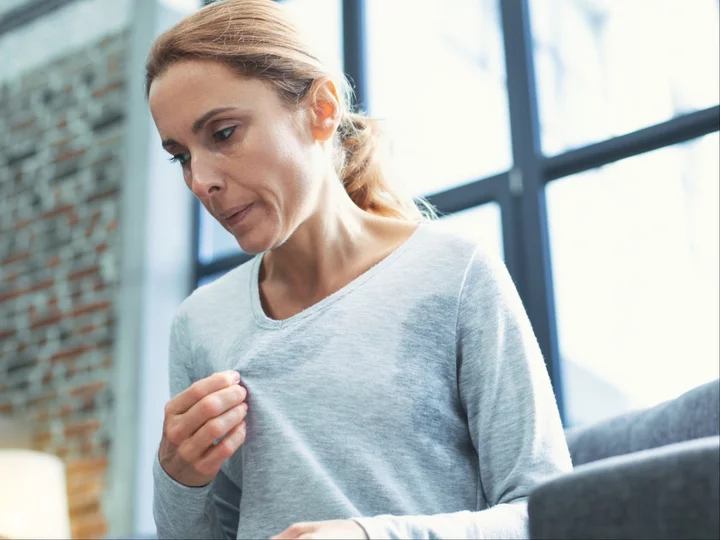
What is fezolinetant? The non-hormonal menopause treatment drug explained
The menopause treatment fezolinetant has been predicted as a “gamechanger” by experts for thousands of women who suffer from hot flushes. The drug, which is the first non-hormonal menopause treatment, was recently approved by America’s FDA. Experts are predicting it could be transformative for women for whom hormone replacement drugs (HRT) are not suitable. The drug was licensed in the US on 12 May and could be approved for use in the UK by the end of the year. According to a British Menopause Society survey, 79 per cent of women aged 45 to 65 experienced hot flushes as a result of their menopause transition, while 10 to 20 per cent describe the hot flushes as “near intolerable”. Here’s everything you need to know about fezolinetant: What is it used to treat? It works to target the menopause symptom of hot flushes. The drug that has been approved by the FDA is made by pharmaceutical company Astella, which advises patients to take one 45-milligram of its VEZOAH (fezolinetant) pill orally, once a day. A large clinical trial of fezolinetant published earlier this year revealed that, after 12 weeks of use, it reduced the frequency of hot flushes by about 60 per cent in women with moderate or severe symptoms, in comparison to a 45 per cent reduction in those who received a placebo. Women involved in the trial also said the drug reduced the severity of hot flushes and improved the quality of their sleep. How does it work? It works by blocking a brain protein called neurokinin-3, which plays a unique role in regulating body temperature in menopausal women. Respondents of the trial have said that the effects of the drug was experienced after taking the first tablet. By comparison, HRT, taken to alleviate menopausal symptoms, replaces the oestrogen that you lose during the menopause transition, either alone or in combination with a progestogen What are the side effects? According to the FDA, the most common side effects are abdominal pain, diarrhoea, insomnia, back pain, hot flush and elevated hepatic transaminases. What have experts said about it? “This is going to be a completely blockbuster drug,” said Prof Waljit Dhillo, an endocrinologist at Imperial College London who led a trial for the drug in 2017 toldThe Guardian. “It’s like a switch. Within a day or two the flushes go away. It’s unbelievable how well these drugs work. It’s going to be completely game changing for a lot of women.” Read More Adenomyosis: 5 things you need to know about the ‘evil twin sister’ of endometriosis ‘Suddenly, I saw Dad again’: The radical technology helping those living with dementia Naga Munchetty reveals womb condition adenomyosis: ‘I live every day on painkillers’
2023-05-22 21:29
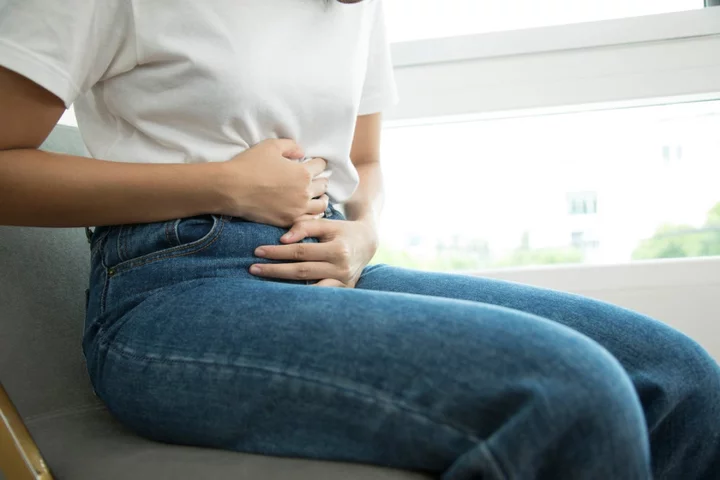
Adenomyosis: 5 things you need to know about the ‘evil twin sister’ of endometriosis
Despite increasing public awareness of endometriosis, with celebrity figureheads including Lena Dunham and Molly Mae, the condition’s ‘evil twin sister’, adenomyosis, remains neglected. While the NHS has an entire webpage which explains what endometriosis is, there is currently no equivalent for its sister condition. Read on for five things you should know. It’s not the same as endometriosis Both endometriosis and adenomyosis occur when the lining of the uterus (known as the endometrium) grows out of place, but there are major differences between the two. In endometriosis, the rogue tissue invades areas outside of the uterus. While the extent of the growth varies from patient to patient, it can affect areas such as the bladder, bowel, ovaries, and even the lungs. Adenomyosis, on the other hand, causes the rogue tissue to bury inside the muscular wall of the uterus. It’s possible to suffer from both conditions at the same time. Symptoms include bloating, heavy periods, and pelvic pain Thanks to the invasive endometrial growth, adenomyosis is characterised by an enlarged uterus. During menstruation, the embedded tissue swells and bleeds, typically causing a variety of symptoms (although some women are asymptomatic). According to a patient leaflet published by University College Hospital, sufferers commonly have painful and irregular periods, with more than half experiencing heavy bleeding. Chronic pre-menstrual pain, and feelings of heaviness and discomfort in the pelvis are among other possible symptoms. Less frequently, adenomyosis can cause bloating, pain during intercourse, and pain related to bowel movements. All symptoms should stop after the menopause. It affects 1 in 10 women The condition is believed to affect 10 per cent of women in the UK. That makes it just as prevalent as endometriosis, although it’s more common in women between the ages of 40-50, and those who have been pregnant before. While the cause of the condition is not known, UCH says that “genetics and some hormones may play a role”. In terms of long-term effects, the North Bristol NHS trust says that adenomyosis does not appear to decrease the chance of pregnancy, however it has been linked to an increased risk of miscarriage and premature birth. Treatment options are limited For women with mild symptoms, trying to get pregnant, or nearing menopause, the North Bristol trust says that treatment may not be necessary, but for those seeking relief from symptoms, it recommends medication to reduce pain and bleeding, and hormonal interventions such as the contraceptive pill. The only “cure” is a surgical procedure involving the removal of the womb (hysterectomy), although this is a last resort intervention. The Bristol-based trust also offers an alternative surgery which involves blocking the blood supply to the endometrial growth, forcing it to shrink, but neither procedure is advisable for women who want to get pregnant in the future. It can take years to diagnose The condition is typically diagnosed using MRI and ultrasound scans, but the NHS says that adenomyosis can take “a long time, even years, to diagnose” because “symptoms and severity can vary between women”. The frequent dismissal of women’s gynaecological symptoms means that signs of adenomyosis may be conflated with ‘normal’ menstruation, or even other conditions such as endometriosis. Anecdotal reports of sufferers suggest that misdiagnosis is common. Gabrielle Union, one of the only celebrities to have publicly identified as having the condition, suspects her condition went undiagnosed for years. Speaking at a conference in 2019, Union explained: “The gag is I had [adenomyosis] in my early twenties, and instead of someone diagnosing me they were like ‘Oh you have periods that last nine or 10 days and you’re bleeding through overnight pads? Not a mere inconvenience... perhaps there’s something more there.’” Earlier this year, the charity Tommy’s reported that the condition might be “underdiagnosed” after a review of existing studies found that “mild” cases could be missed by clinicians using current diagnostic methods. “There should be training for clinicians and sonographers to diagnose adenomyosis using a standardised criteria,” said Dr Ishita Mishra, leader of the review. “Being able to identify this condition using a uniform set of criteria would then help give us a true picture of the numbers affected, and better understanding of the impact of this condition,” Mishra explained. If you have any health concerns, you should always contact your GP in the first instance. There is also information available via NHS Scotland or Endometriosis UK. Read More Lena Dunham marks five years of sobriety: ‘Happiest of my time on earth’ ‘Some days things just do not work’: What happens when your smear test doesn’t go smoothly? Woman’s warning after terminal cancer mistaken for heavy periods 5 things you need to know about adenomyosis, the ‘evil twin sister’ of endometriosis Woman’s warning after lip filler left her unable to close mouth ‘Suddenly, I saw Dad again’: The radical tech helping those living with dementia
2023-05-22 19:45
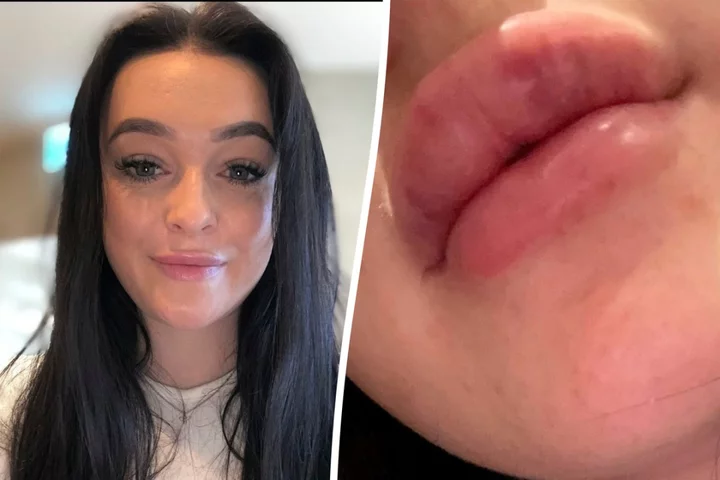
Woman’s warning after lip filler left her unable to close mouth
A woman horrified after lip filler left her unable to close her mouth has urged others to “do their research” before getting cosmetic surgery. Harriet Green, 23, wanted plumper lips after being influenced by videos on TikTok and influencers from Love Island, and went to a salon to get 1.1ml of filler in December 2022. Immediately after the procedure, which entailed a substance being injected into her face, Harriet’s lips started to swell up and bruise but she claims she was assured it was normal and they would go down within weeks. But three months later, her lips were still swollen and Harriet claims she was left with two painful lumps in her lips and unable to properly close her mouth. Harriet had to undergo three corrective procedures, costing £700 in total, to get her lips back to normal. Harriet, a council worker, from Acle, Norfolk, said: “This was the first time I had anything done. “On the way to my appointment, the woman at the salon told me to numb my own lips which now I realise you should not do. “When I was getting my lips done, it was painful but at that time I didn’t realise it is only painful when not done correctly. “Straight after they were very sore and started to bruise. “After all the bruising had gone, I had two hard lumps on my lip - one on the left and one on the right. “It made me feel so much more self-conscious - it was painful and uncomfortable.” Harriet got her lips done in December 2022 and paid £100 for 1.1ml of filler. After the procedure, Harriet thanked the aesthetics practitioner and headed home but started experiencing swelling and bruising on her lips - which she originally thought was standard. Harriet said: “I was assured that the bruising was normal, and it would go down. “But, after all the swelling and bruising had gone, I was left with two hard lumps. “I stopped going to the woman as I was annoyed, and people close to me started commenting on how my lips didn’t look good. “They said they could see unevenness in my lips and could see two lumps on the top tip. “I’d wake up in the mornings and my lips would be swollen.” Harriet found Dr Raja - a GP who runs her own aesthetics clinic in Norwich and underwent three corrective procedures - used to tissue to dissolve any hyaluronic acid-based filler - costing £700. Harriet said: “I had to get my lips dissolved three times as too much filler was put in and it was injected into the wrong place. “I had to go back three times before she could add new filler to my lips. “I have been lucky, don’t get me wrong, I still have lumps in my mouth, but people have had it a lot worse. “After getting my lips done it made me feel so much more self-conscious, it is painful and uncomfortable. “But now you can’t even tell I have had them done as I have had them done properly.” Originally, Harriet was injected with 1.1 mil and Dr Raja inserted 0.6 mil into her lips the second time around. Harriet said the world of cosmetic surgery is a “minefield” and it has put her off any cosmetic procedure for life. She said: “It is so common nowadays. “I don’t judge people - when you have never had anything done before, you don’t know what you should be looking out for. “Looking for what should go wrong and what should go right. “It is important to research the person, don’t just go off social media pictures like I did. “Look for healed pictures of someone’s lips, not just fresh off the needle as they will look nice and plump straight after.” Harriet believes that social media and reality shows like Love Island play a major role in people wanting to get cosmetic procedures. She said: “I won’t have anything done to my face now, at one point my TikTok was full of jaw filler and Botox which swayed me into wanting to get it done. “It seems like such a normal thing to do now - that is the problem. “Shows like Love Island, all the girls on there have had something done to enhance their look which is not natural. “You don’t really ever see anyone there who is ‘natural’ and not had something done. “It feels more common and appealing to others that if you have filler and botox you are seen as more attractive.” Read More Woman defends picking up ‘$8k’ sofa from New York street Couple with 37-year age gap who met when he was 15 have hopes dashed Eamonn Holmes makes startling claim about Phillip Schofield’s ‘nonsense’ This Morning statement
2023-05-22 18:56
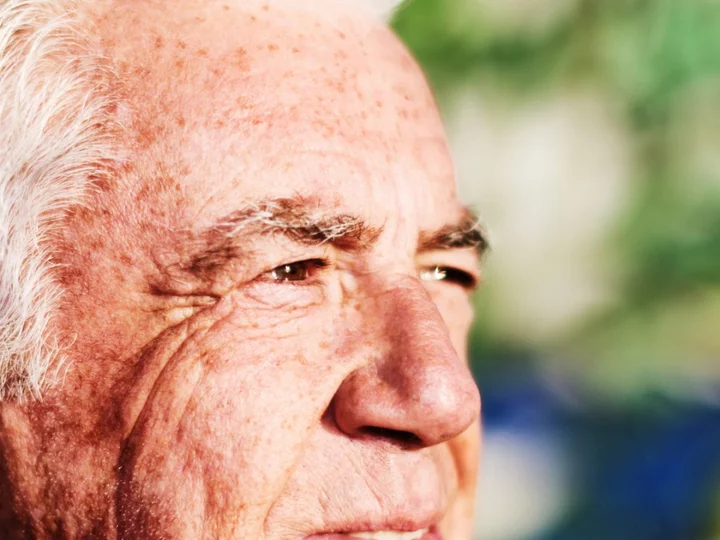
‘Suddenly, I saw Dad again’: The radical technology helping those living with dementia
There is a scene in the 2020 film The Father, starring Anthony Hopkins and Olivia Colman, that is all too familiar for people caring for someone with dementia. In it, Hopkins’ character Anthony struggles to keep up with his daughter Anne’s (Colman) movements. One moment, she is bringing home dinner. The next, she is talking about moving to Paris with a boyfriend he doesn’t like. She’s in his flat. Suddenly, he’s in her flat. Her face shifts – she looks like someone he used to know, then a total stranger. Where is he? When is he? Dementia is a cruel sickness that radiates outwards, seeping into the lives of anyone in its orbit. Patients become lost in a maze of memories. The present day becomes too slippery to hold on to, so many retreat into themselves. Wayfinding – meaning the ability to find one’s way in the world – becomes severely impaired, resulting in anxiety, confusion, and distress that can be very difficult for families and carers to cope with. There is no cure for dementia, and most medical research is focused on finding treatments for diseases that cause dementia, such as Alzheimer’s disease and dementia with Lewy bodies. It’s extremely important work, but there’s also a need for tools that can help those living with dementia as well as their families and carers. As research shows that visual cues can help deliver much-needed aid and relief, a number of small creative companies are stepping in to fill in the gap. Sarah Harrison is the founder of Recognii, the world’s first entertainment DVD made especially for people with moderate to later-stage dementia. The idea for Recognii came about after Harrison began taking care of her father when he was diagnosed with Alzheimer’s in 2015. She and her mother, a former nurse, opted to care for him in their family home in Harrogate, where Sarah also resides. “As the condition progressed, he became very withdrawn,” she recalls. “He couldn’t watch TV or engage himself in his own activities, couldn’t really have a conversation, couldn’t read books anymore because he couldn’t follow the plot.” But amid all the gloom cast by the disease, there’d be breakthrough moments when Sarah saw her father as she always knew him. These moments often came when he watched children’s TV, as the faces of smiling, happy children and brightly coloured graphics grabbed his attention. “It was great, but it was also too childish and didn’t reflect his life,” Sarah says. “I thought, surely there must be something out there that is more simplistic viewing that does reflect adult experiences – but there was absolutely nothing.” An idea began to form. Sarah thought that if she could create engaging short clips of “gentle, joyful stuff” with no storylines, it would bring him some relief from the fog in his mind. “He responded to very bright colours and contrasts, and two-dimensional images, which reflected what we know about the way dementia impacts cognitive and visual processing.” Changes in visual perception occur when the sensory journey between the brain and organs (such as the eyes and ears) gets interrupted, or slows down due to dementia. According to Alzheimer’s UK, the disease can also lead to damage to the eyes or parts of the brain, which can then lead to misperceptions, misidentifications, hallucinations, delusions and time-shifting. Like Anthony’s experience in The Father, time becomes an amorphous thing, which jumps back and forth instead of moving in a linear fashion. As such, older memories can become safer places for dementia patients to revisit. I noticed the iPad gathering dust. She said it wasn’t easy for her to use and she missed getting letters and postcards like she did in the past Famileo, a company that creates “family newspapers” for elderly people – many with dementia – works with families of patients to create personalised hard-copy newspapers that utilise “reminiscence therapy” to help soothe and comfort. “Typically, people with dementia are more likely to remember long-term memories,” explains Tanguy De Gelis, a co-founder of the company. “Famileo includes old photographs of themselves and the family, which stimulates their memory and helps them remember people as they were.” Each photograph included in the newspapers is accompanied by text that helps provide context, so that the reader can easily identify who they’re looking at, as well as their own place in the family in relation to the people in the picture. “Managers and activity coordinators at care homes often tell us that a person’s dementia journey is not linear, that symptoms come and go,” De Gelis continues. “The consistency and reliability of these personalised newspapers allows it to be appreciated even more on the ‘good days’ patients have. It can be very hard for family members to think of things to talk about with an older relative, but the newspaper can be a conversation starter and provide a visual guide for both sides.” Having a physical newspaper is also a boon for many elderly people who struggle with smartphones, tablets and laptops. For De Gelis, it was his grandmother who inspired the idea for Famileo. “I bought my grandma an iPad as a Christmas present so she could keep in touch with the family through our WhatsApp group,” he recalls. “But one day I went to visit her and I noticed the iPad gathering dust. She said it wasn’t easy for her to use and she missed getting letters and postcards like she did in the past.” The slow pace in developing tools for coping with dementia is down to a lack of understanding about the disease, says Dr Emilia Molimpakis, CEO and co-founder of Thymia. For years, patients languished in care homes, their minds deteriorating as families watched on helplessly. “Unfortunately, up until recently, pinpointing clear signs of Alzheimer’s disease relied on invasive and/or expensive medical tests and these often don’t show clear results until the disease has progressed substantially.” But recent developments in medical treatments and in the field of artificial intelligence (AI) have shifted things. Dr Molimpakis’ platform involves building AI-powered tools to improve the speed, accuracy and objectivity of dementia diagnoses. Thymia also uses video game-style activities to test for symptoms of cognitive disorders, she says, such as major depression, anxiety and dementia. “Each game is built around one or more cognitive tests, the results of which show tell-tale signs of symptoms, such as fatigue issues, memory impairment, concentration difficulties and more,” she explains. It does so by using software that analyses “biomarkers” of disease while players complete the activities across three key data streams: voice, video and behavioural measures. By analysing how someone speaks or what facial micro-expressions they make, Thymia’s work-in-progress models have identified symptoms in major depressive disorders with more than 90 per cent accuracy, Dr Molimpakis says. Major improvements in healthcare mean that people are living longer – but in a cruel twist of fate, this means that dementia is becoming ever more prevalent. There are currently more than 55 million people living with dementia globally, and according to Alzheimer’s Disease International, this figure is expected to balloon to 78 million in 2030 and 139 million in 2050. While scientists are working on earlier diagnosis and treatment, the need for coping mechanisms for living with the disease is growing. Harrison remembers how her father would react when she showed him the clips she created. He passed away before the final version of Recognii’s DVD could be launched. “It’s like the clouds would part, just for a few seconds,” she recalls. “Suddenly, I saw Dad again. The moments when you get a glimpse of who they used to be are so precious, because as the disease progresses, you do feel like you are losing them. So having made something that helps bring them back, even temporarily – it’s like a gift.” Read More A One Direction fan claimed she had a brain tumour. Five years after her death, we still need answers ‘Death acceptance brings peace’: Are death doulas the cure for our fear of the end? ‘You always feel like you’ve done something wrong’: Why UK surrogacy laws need a ‘real overhaul’ Jason Manford comforted by fans after announcing death of family member Grandmother praised for refusing to babysit daughter’s newborn for free 7 tips and tricks for hay fever relief
2023-05-22 14:22

7 tips and tricks for hay fever relief
Incessant sneezing, runny, red hot nose, dry itchy eyes and a banging head from wheezing all the time, it’s exhausting! So far it’s really proving to be far from a summer of fun for hay fever sufferers. While we love verdant trees, green grasses (grass pollen being the most common cause of hay fever coming into July) and flower beds to delight our bees and boost our picnic plans, the pollen plants release cause any number of allergic reactions. According to Allergy Ireland, about 25 per cent of all Europeans suffer some type of nose/sinus/chest allergy and this is set to rise to 50 per cent within the next decade Hay fever sufferers should have antihistamines handy and should visit their GP if things get really bad, but in the meantime, here’s how to help ease any irritation, at least a little… 1. Be prepared with an app My Pollen Forecast Pro UK is cited as one of the best apps for tracking the pollen count and your allergens. With a five day forecast, a diary feature to track your allergies and a live pollen map, at least it can help you prep for the great outdoors. Available on the App Store. The Asthma Society of Ireland offers a similar app with a pollen tracker for daily updates on pollen levels around Ireland, including a forecast and predictions for the following day. Plus it’s free. 2. Keep the windows closed Sunshine and blue skies? It’s only natural to want to throw open the windows. Unfortunately, this can let all those nasties in, so try to avoid opening them during peak pollen hours of late morning and late afternoon; and close them at night when there’s a high pollen count too. 3. Vaseline can help in various ways A godsend when you have dry lips, eyelids or cracked skin, Vaseline can also help soothe and protect your nose. Try smearing it inside each nostril to ease any soreness and catch pollen entering the nasal passages. 4. Take a cool shower If your eyes are streaming and you can’t stop sneezing, take refuge under the coolness of cold running water. Not only will it help ease symptoms, but you should wash your hair and change your clothing if you’ve been spending any length of time sitting or working outside. If a shower isn’t practical, put a cold facecloth on your face and lie down for a few minutes. 5. Used tea bags can help ease puffy eyes Make the most of your morning cuppa by putting used tea bags in the fridge and use them as a cold compress to help relieve any swelling and soothe sore, itchy eyes. Cucumber slices can work too. 6. Keep your face mask on Face masks have become so much the norm, you may as well use them to filter out particles of pollen. Especially with summer socials in full swing, if you’re going on a picnic, it’s windy or you have to mow the lawn… eek! 7. Wear wraparound sunglasses Fashionable, sporty and with a fair chance of slightly increased protection against pollen getting in your eyes, a cool pair of wraparound sunnies is your best summer investment – an A-list accessory with benefits. Read More Charity boss speaks out over ‘traumatic’ encounter with royal aide Ukraine war’s heaviest fight rages in east - follow live 7 tips and tricks for hay fever relief Top Films: w/c Saturday, May 27 Soap Guide: w/c Saturday, May 27
2023-05-20 16:20
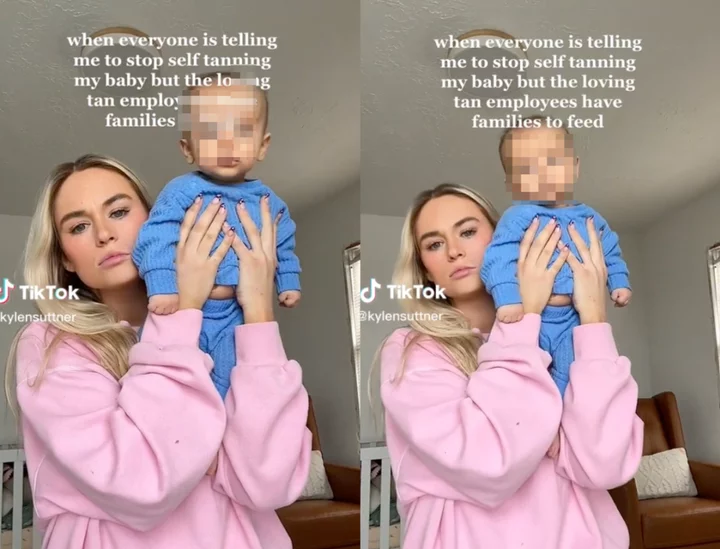
Mother speaks out after video about putting fake tan on baby goes viral
A mother has clarified that a video she made about giving her child a fake tan was a joke, after she faced a backlash over her footage. Kylen Suttner frequently posts videos on TikTok about her partner and their four-month-old child. In one clip, posted in March, she could be seen holding up her baby, while she appeared to have a serious look on her face. She also poked fun at the self-tanning product that she joked she used on her child, in the text over the video. “When everyone is telling me to stop self-tanning my baby but the loving tan employees have families to feed,” she wrote, referring to the popular self-tanning spray, Loving Tan. In the caption, Suttner added: “loving tan is our fave.” As the video quickly went viral, with more than 1m views, it sparked mixed responses. However, Suttner has now clarified that her video was actually a joke. During an interview with New York Post, she said that her baby had jaundice when he was born, which is what made his skin tan. According to the Cleveland Clinic, jaundice “a condition in which the skin, sclera (whites of the eyes) and mucous membranes turn yellow”. “Everyone commented on his colour, so I decided to make a joke about it. I would never actually use self tanner on my baby,” she said. “I feel like most people understood it was a joke. But the few who didn’t were appalled that I would self tan my baby.” Although Suttner made this clarification about her video, the clip was still hit with criticism regarding the use of using self-tanners on babies. “Disgusting! So horrible!” one wrote, while another added; “I can’t tell if this is a joke?” @kylensuttner loving tan is our fav #tan #selftan #selftanning #selftanday #lovingtan #babyboy #newborn #newbornnap #momtime #naptime #newbornbaby #newbornbabyboy #momtok #postpartumbody #postpartumrecovery #postpartum #fourthtrimester #4thtrimester #newmom #newmomtok #postpartumjourney #csectiondelivery #csection #csectionmom #csectionrecovery ♬ original sound - Barney However, many TikTok users poked fun at the video and realised that it was just a joke. “You gotta keep the tan up, it’s a lifestyle Brian,” one quipped in the comments of the video, while another added: “So funny to me that people think you’re being [for real].” A third wrote: “I love this… I wish I had his skin colour.” The Independent has contacted Suttner for comment. According to the National Health Service (NHS), it is generally safe for women to use fake tan creams and lotions while pregnant. But, the site recommends avoiding spray tans, since “the effects of inhaling the spray are not known”. “The active ingredient in fake tan is dihydroxyacetone (DHA),” the medical site notes. “As the DHA isn’t thought to go beyond the outer layer of skin, it isn’t absorbed into the body and can’t harm your baby [during pregnancy].” The medical site also advises against using tanning pills, which are banned in the UK. “They contain large quantities of beta-carotene or canthaxanthin, which are commonly used as food colourings and can be toxic to an unborn baby,” NHS states. Read More Grandmother praised for refusing to babysit daughter’s newborn unless she’s paid $20 an hour Mother shares horrifying moment she found ticks living in her daughter’s ear Stay-at-home mother explains why she relies on full-time nanny Schoolboy almost dies from swallowing magnets for TikTok challenge Woman shares honest review of New York City apartment TikTok mom slammed after making 5-year-old son run in 104 degree heat
2023-05-20 05:21
